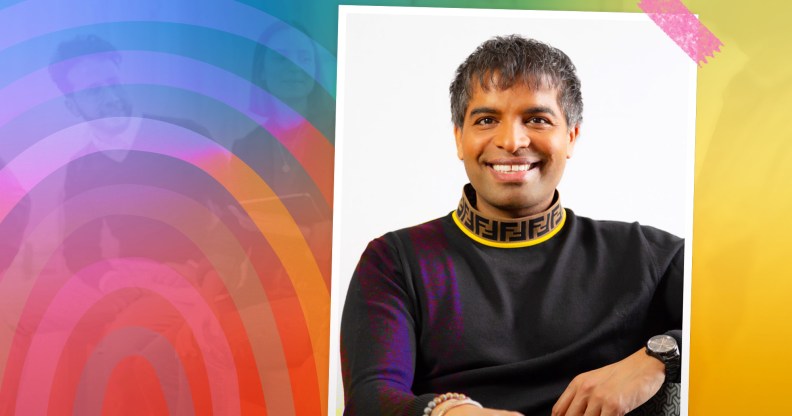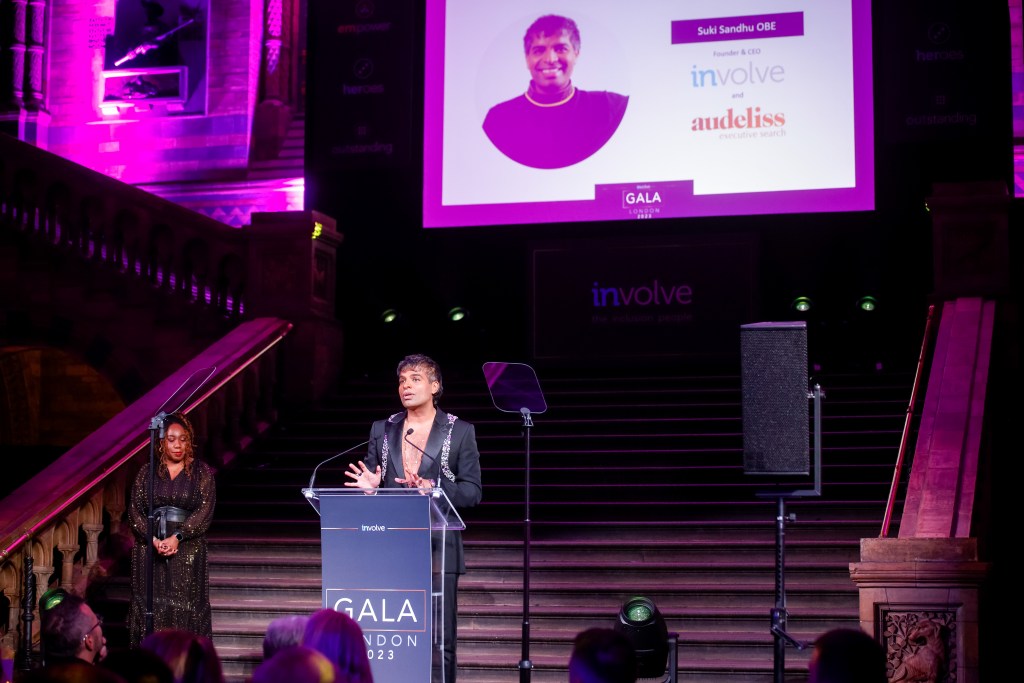Diversity and inclusion in business ‘about doing the right thing’, says Suki Sandhu

As the founder and cheif executive at Audeliss and INvolve, Suki Sandhi OBE is committed to placing LGBTQ+ people into senior leadership roles. (PinkNews/Audeliss)
PinkNews speaks to Suki Sandhu OBE, founder and chief executive of consultancy firms Audeliss and INvolve, about how diverse leadership is essential for success in today’s global marketplace and how small businesses can start their own inclusion journey.
In the modern corporate landscape, the importance of diverse leadership cannot be ignored. Companies that champion diversity and inclusion at all levels send a powerful message to their employees, customers, and stakeholders: that they value equality, fairness, and the varied perspectives that drive progress. As organisations recognise the transformative potential of diversity, they are also acknowledging the need for representation from marginalised communities – women, people of colour, and the LGBTQ+ community – in senior leadership roles.
Historically, corporate boardrooms and senior management have been predominantly occupied by individuals who reflect a narrow slice of society – straight, white and male. Career growth and social mobility are often lacking for non-white, non-straight people. A report from KPMG found that just 34 per cent of managers come from ethnic minority and low socio-economic backgrounds.
By embracing diverse leadership, companies are fostering a more inclusive work environment and gaining a competitive edge in a global marketplace that values diversity of thought. Data from BCG found that having diverse management teams in place led to nearly 20 per cent more profit.

Suki Sandhu OBE is determined to see more diversity in leadership and the boardroom. As the founder of the executive recruitment firm Audeliss, Sandhu is placing women, ethnic minorities and the LGBTQ+ community into leadership positions. Along with Audeliss, Sandhu is also the founder of INvolve, an inclusion consultancy business. The two companies are essentially all about people and go “hand-in-hand.”
“If Audeliss is about talent acquisition at a senior level, INvolve is about helping you to retain people at all levels in the business because you can’t really do one without the other,” he explains.
“We drive for success because we’re worried we’re going to get rejected by everyone.”
Suki Sandhu OBE
After deciding that a career in accountancy wasn’t for him, Sandhu found his way into the recruitment industry, landing a graduate position at the recruiting giant Michael Page. Having started off his career in the closet, Sandhu found the confidence to come out at work while becoming one of the firm’s top consultants.
Sandhu believes that fear of rejection is what drives many LGBTQ+ professionals, and winning at work can be a motivator to come out and live authentically.
“We drive for success because we’re worried that we’re going to get rejected by everyone, right when we do come out,” he says.
As Sandhu began to take note of the lack of representation in senior roles, he found a role at a boutique firm specialising in diversity – and that’s where he found his calling.
“This is what I need to do. I need to help minorities get positions of power,” he comments.
“The bigger jobs we have, the more influence we have, and the more things we can do with that influence both inside and outside the workplace.”
“You can’t be what you can’t see.”
Suki Sandhu, OBE
The case for diversity and inclusion throughout leadership starts with an easy-to-see business case: improving productivity and engagement leads to more profits. Sandhu sees this business case as a motivator for the straight white men currently in charge to pay attention because “doing the right thing wasn’t quite enough of a carrot to get them to actually take action.”
He continues: “They need the data research because they respond better with numbers. These are the kinds of stats that are going to make CEOs listen and actually take action.”

Beyond profits and business bottom lines, Sandhu is keenly aware that representation and visibility for all contribute to an inclusive workplace. INvolve publishes annual lists highlighting top role models from marginalised communities. For Sandhu, these lists reinforce visibility in leadership and show the opportunities that should be available to all.
“For me when it comes to representation at a senior level, it’s also about you can’t be what you can’t see,” he says.
“It’s to give hope to the next generations, inspire them to succeed and to build more of a community and encourage others to take action.”
“It’s about doing the right thing and putting that right thing above profits or cost.”
Suki Sandhu OBE
Diversity and inclusion (D&I) agendas and initiatives tend to be easier at companies with a large employee count, but with more than 16 million people working for a small to medium enterprise (SME), smaller businesses still need to carve out a space to champion a diverse workplace.
Sandhu believes that the first step these SMEs can take is not to overthink. “If you have a mindset of wanting to be more inclusive, it will manifest in behaviours that you already are probably doing to ensure that everyone’s being included,” he states.
The diversity expert insists that basic steps like eliminating gender-based language and examining just how inclusive a policy is for all employees are easy ways to show commitment to change. Even within his own company, Sandhu just rewrote the parental leave policy to reflect the different ways people experience parenthood.
“It’s about doing the right thing and putting that right thing above profits or cost,” he says.
Above all else, Sandhu knows that mistakes will happen, but that shouldn’t get in the way of the journey.
“Just don’t be afraid to implement interventions,” he concludes. “Learn as you go along and pivot and change what you’re doing and assess the results.”

